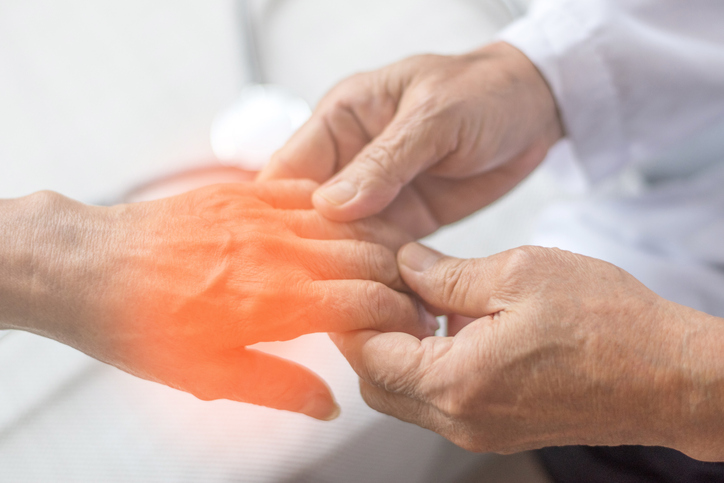CARPAL TUNNEL SYNDROME
There are more than 3 million cases of carpal tunnel syndrome per year in the United States. Peripheral nerve compression of the upper or lower extremity commonly occurs in patients who participate in recreational sports and repetitive occupational activities.

What is Carpal Tunnel Syndrome?
This is the most common nerve entrapment injury. It is caused by compression of the median nerve at the wrist. Although most cases of carpal tunnel have no cause, some of the following may contribute:
- Frequent, repetitive, small movements with the hands (such as with typing or using a keyboard)
- Frequent, repetitive, grasping movements with the hands (such as with sports and certain physical activities)
- Hormonal or metabolic changes (for example, menopause, pregnancy, or thyroid imbalance)
- Changes in blood sugar levels (may be seen with type 2 diabetes)
- Family history of carpal tunnel syndrome
More Common Symptoms
- Weakness when gripping objects
- Pain or numbness in one of your hands
- Carpal tunnel affects the thumb and index/middle fingers
- “Pins and needles” feeling in the fingers
- Swollen feeling in the fingers
- Burning or tingling in the fingers, especially the thumb, index and middle fingers
- Pain or numbness that is worse at night, interrupting sleep
![Arteriovenous malformations are an abnormal tangle of blood vessels in the brain where the arteries are connected to veins. Click here to learn more about arteriovenous malformations [link]](https://stlbrainandspine.com/wp-content/uploads/2021/07/iStock-1282881762.jpg)
Learn More About Carpal Tunnel Syndrome
Other Peripheral Nerve Disorders
Ulnar Neuropathy (or Cubital Tunnel Syndrome)
Compression of the ulnar nerve that occurs almost always at the elbow. Ulnar nerve entrapment can cause pain, numbness and tingling in the forearm and the fourth and fifth fingers (ring and little fingers). In severe cases, ulnar nerve entrapment can cause weakness in the hand and loss of muscle mass.
Ulnar nerve entrapment at the elbow can occur when there is prolonged stretching of the nerve by keeping the elbow fully bent or when there is direct pressure on the nerve from leaning the elbow against a solid surface. Similar to the phenomenon of a person’s arm “going to sleep,” or “hitting your funny bone,” a pinched ulnar nerve can result in tingling, pain and numbness.
In some people, the ulnar nerve does not stay in its proper position and can shift across a bump of bone in the elbow when the arm flexes, referred to as a subluxing nerve. Repeated shifting can cause irritation of the ulnar nerve.
Peroneal Nerve Compression/Injury
The common peroneal nerve branches from the sciatic nerve and provides sensation to the front and sides of the legs and to the top of the feet. This nerve also controls the muscles in the leg that lift the ankle and toes upward.
The peroneal nerve can be injured by trauma and nerve compression, including:
- Knee Dislocation
- Knee or leg fracture
- Knee or hip replacement surgery
- Compression of the peroneal nerve in the leg
- Compression of the peroneal nerve by a nerve sheath tumor or nerve cyst
Peroneal Nerve Injury Symptoms
- Inability to point the toes upward or lift the ankle up (dorsiflexion)
- Pain, weakness or numbness affecting the shin or the top of the foot
- Loss of ability to move the foot
Treating Peripheral Nerve Disorders
- Ergonomic Splints
- Physical Therapy
- Anti-Inflammatory Medications
- Surgery
- Contact Us
Carpal Tunnel: splinting your wrist. This helps keep your wrist from moving. It also eases the compression of the nerves inside the tunnel.
Ulnar Nerve: splints to help immobilize the elbow.
Peroneal Nerve: an orthotic or brace that fits in the shoe can bring relief and also help with mobility.
Carpal Tunnel: help with pain in hands.
Ulnar Nerve: strengthen the ligaments and tendons in the hands and elbows.
Peroneal Nerve: physical therapy and gait retraining can help the person improve their mobility and regain some strength in the foot.
Carpal Tunnel: these may be oral or injected into the carpal tunnel space. These reduce the swelling.
Ulnar Nerve Compression: drugs such as aspirin, ibuprofen and other nonprescription pain relievers to help reduce pain and inflammation.
Carpal Tunnel: surgically decompress the median nerve at the wrist. Learn more about median nerve decompression.
Ulnar Nerve decompression: at the elbow. The surgeon makes an incision at the patient’s elbow and performs a nerve decompression, and in some instances, moves the nerve to the inner part of the arm so that it is in a more direct position.
Peroneal Nerve Decompression: decompress the peroneal nerve below the knee to help with pain and hopefully give the best chance to regain strength in the foot.
Ready to learn more? Contact us today to get started.
Make an Appointment
New & Existing Patients: Request An Appointment
New and existing patients may request an appointment by filling out the form below. Someone from our team will be contacting you to schedule an appointment time.

